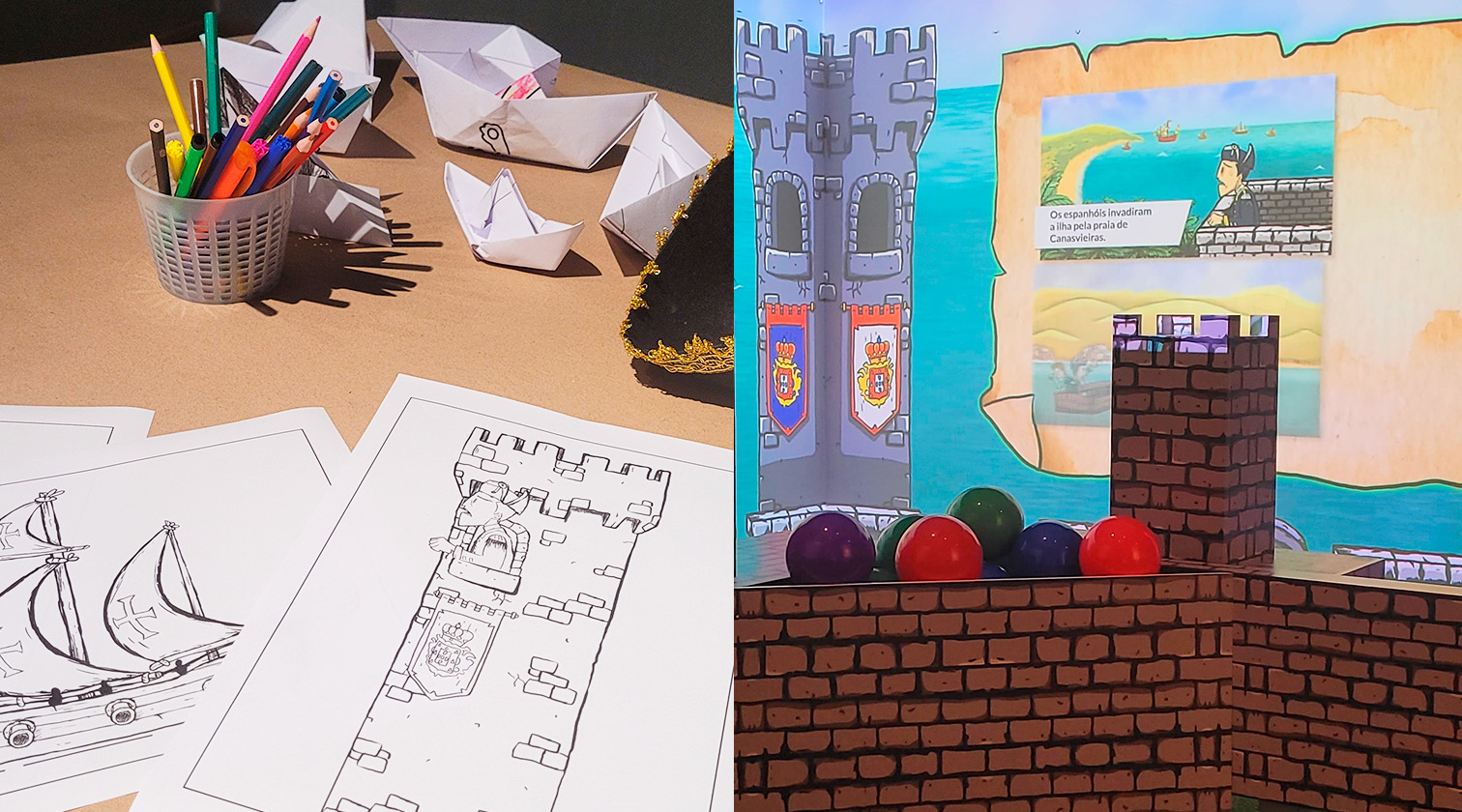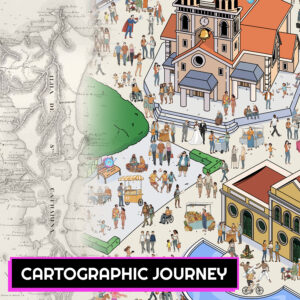
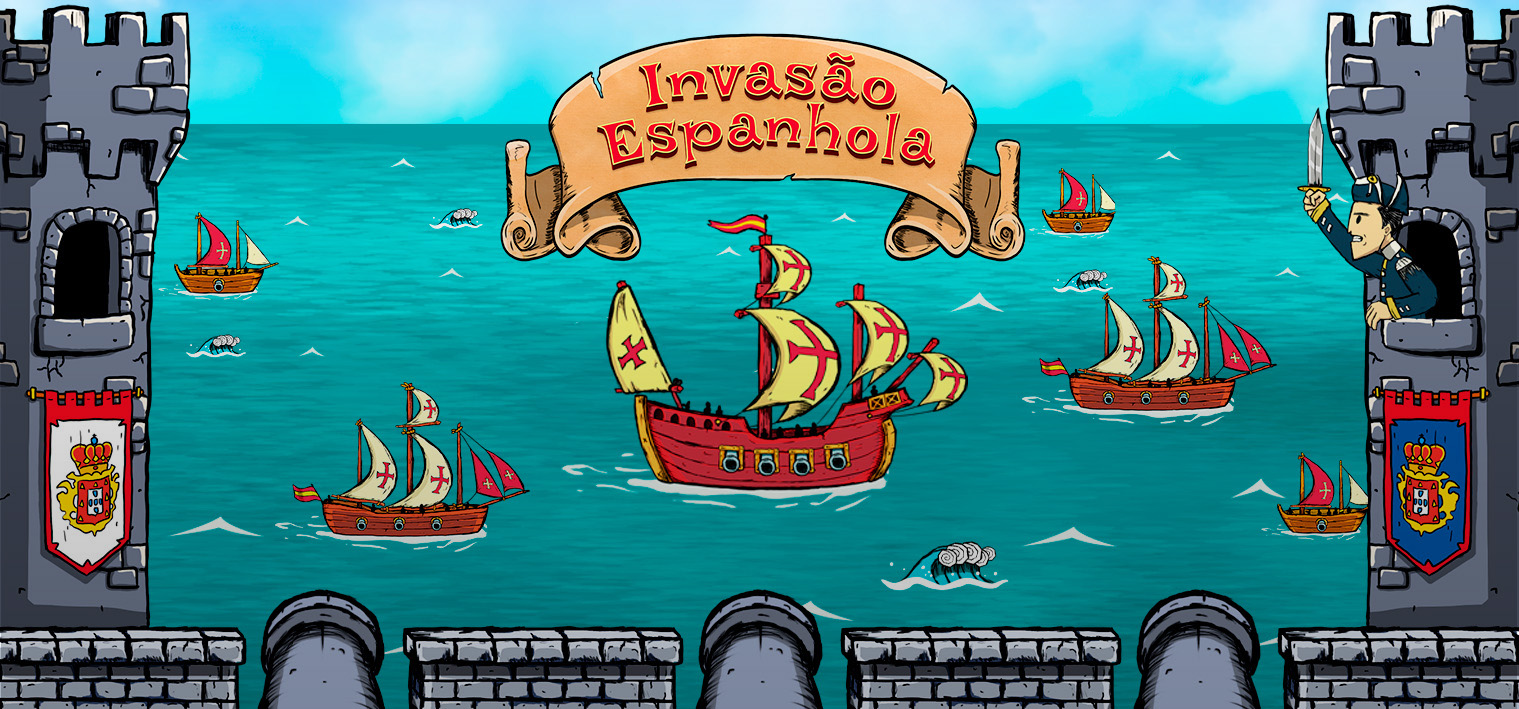
In celebration of the city's anniversary, the Museum of Florianópolis and Cafundó created an interactive exhibition. We developed a historical game installation based on the Spanish Invasion of the city.
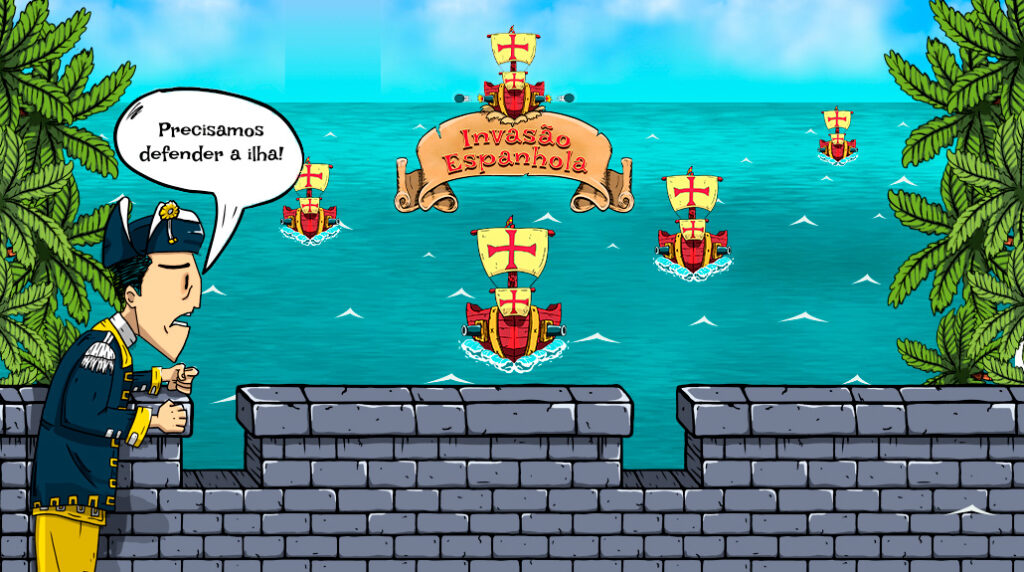
The game takes place in a fort overlooking the sea, simulating the arrival of Spanish ships in 1777, about to invade Santa Catarina Island. Players are guided by a Portuguese captain to take down as many enemy ships as possible using inflatable balls that simulate cannonballs!
With 2D animations, the game's look sought faithfulness to the aesthetics of the time, both for the Spanish caravels and for the Portuguese captain's clothes and other scenarios of the historical universe. After defining the artistic style, we looked for the ideal platforms to develop the game. We used Unity as engine and Blender for animations. The challenge was to make the virtual elements interact with the manual actions, creating a reality that mixed the virtual universe with the physical world.
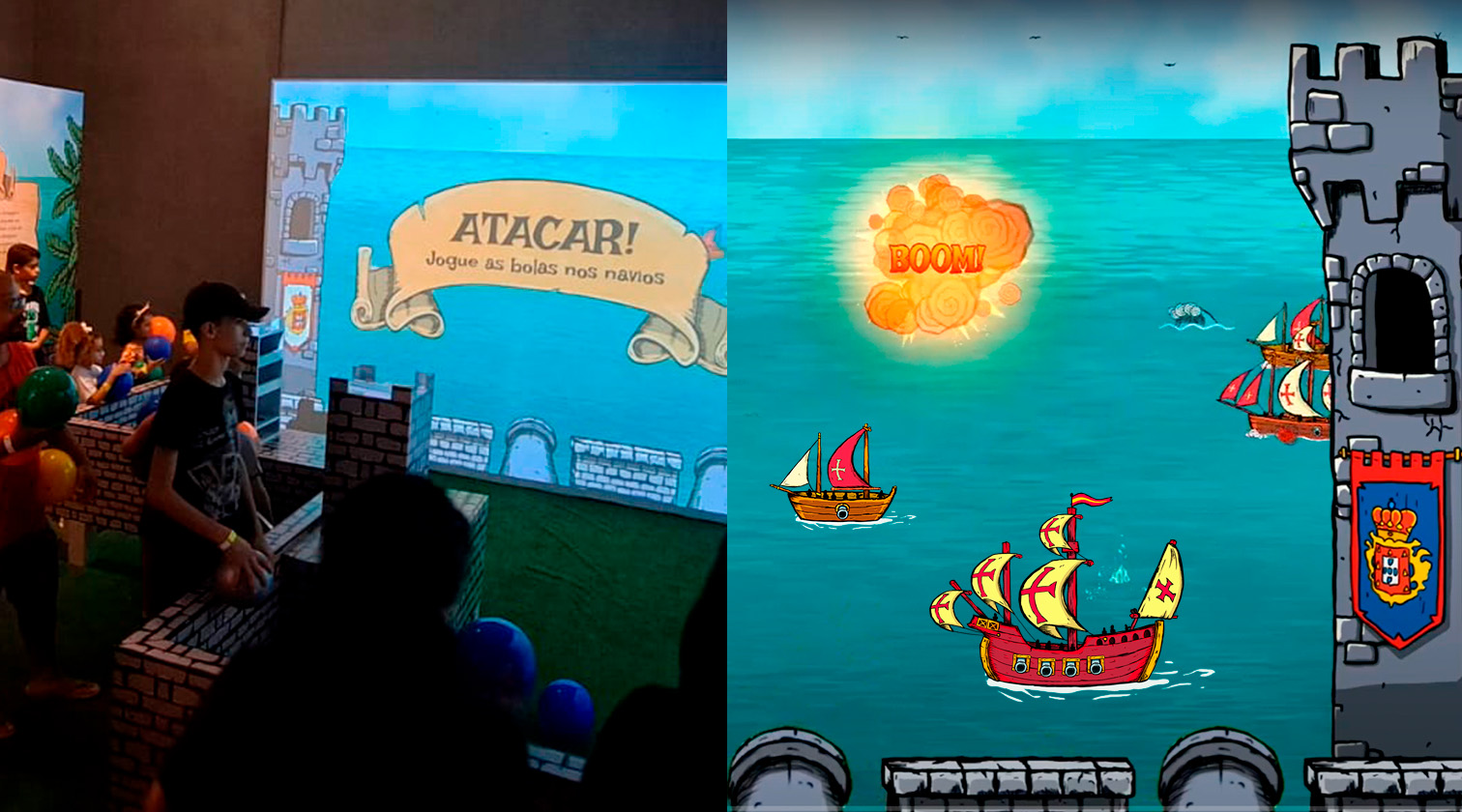
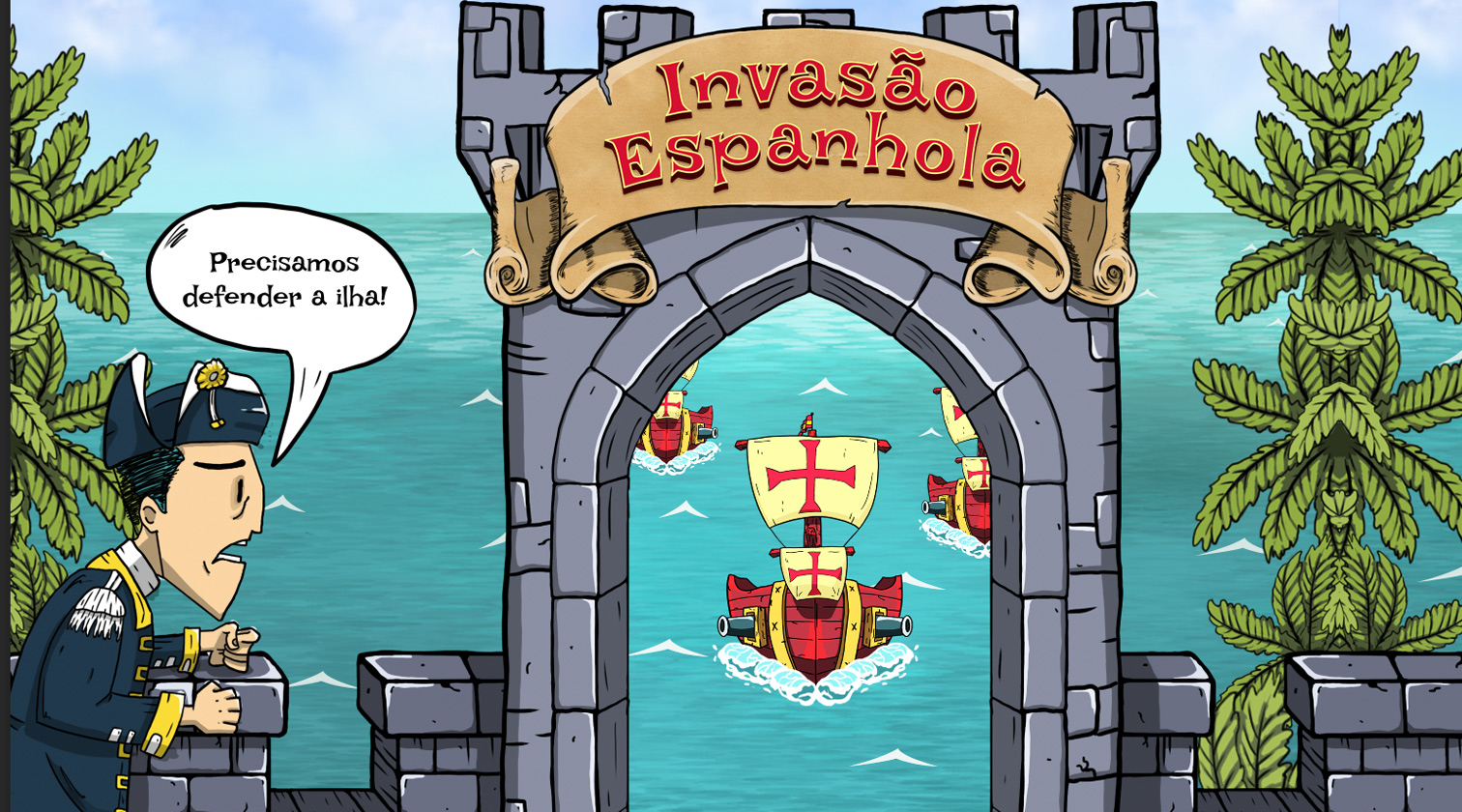
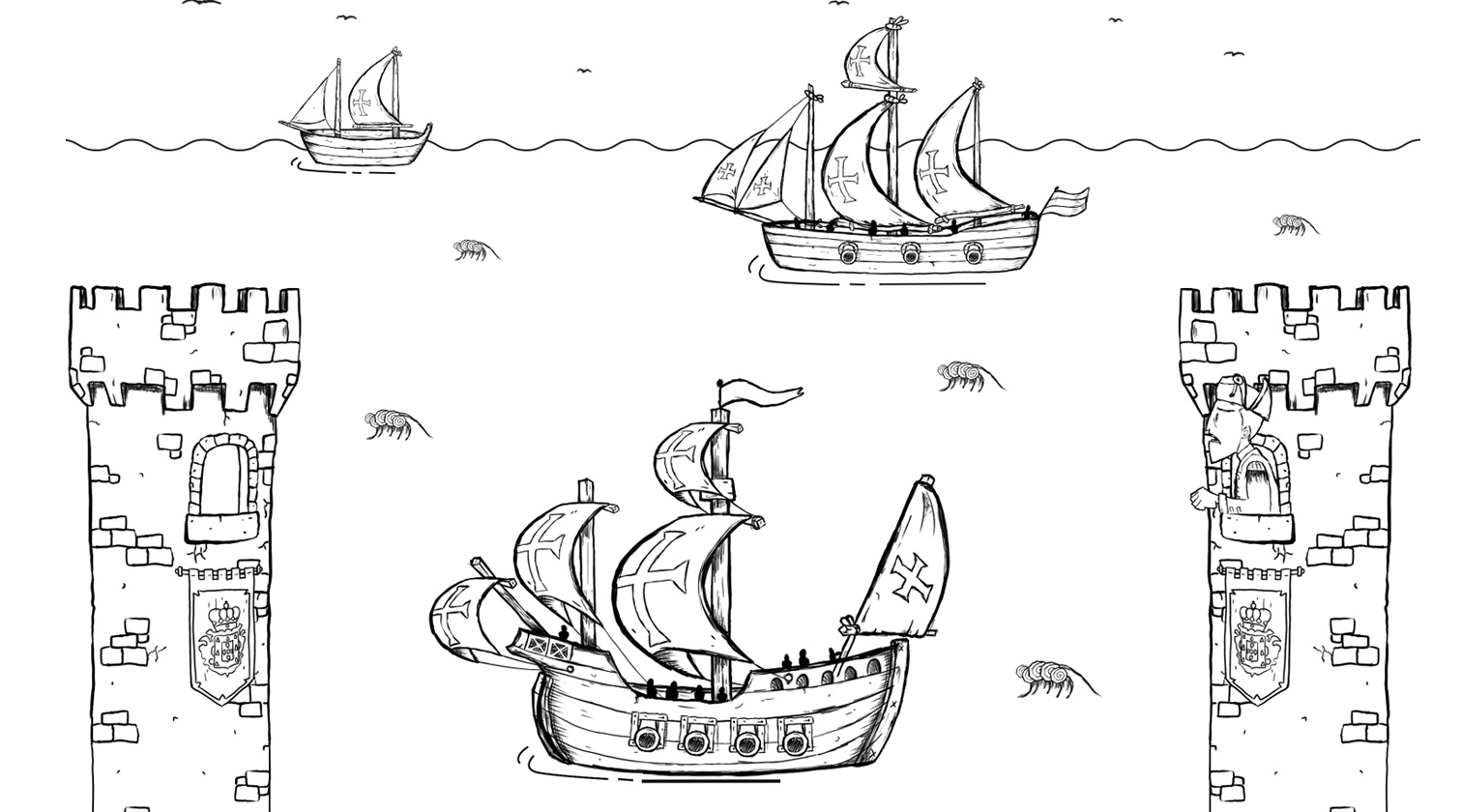
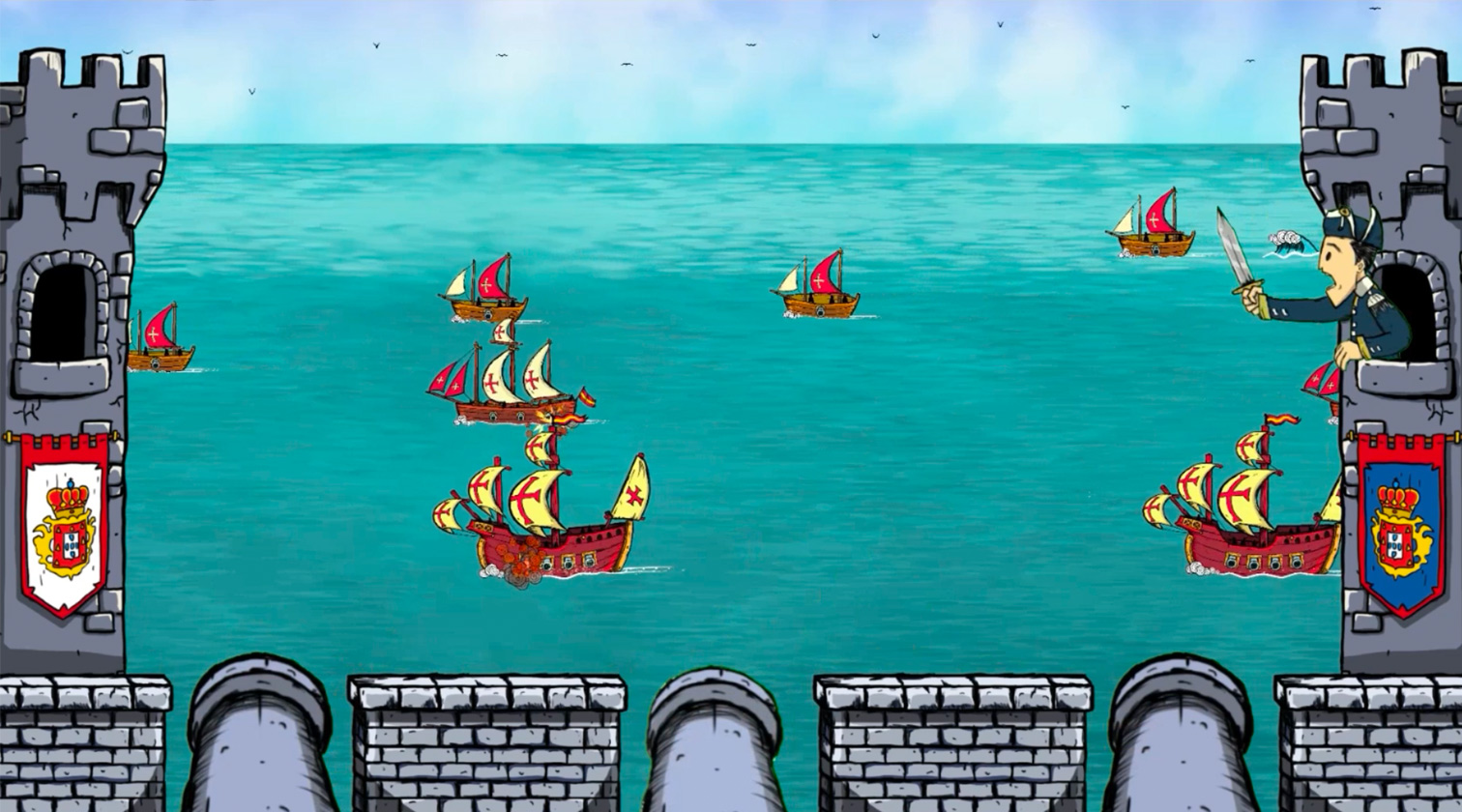
The Island of Santa Catarina (current Florianópolis) was located in a strategic access point for Uruguay, a place of major disputes over the Rio de la Plata and the territory of Rio Grande do Sul. In order to recover the lost territories, in february 1777 the Spanish crown sent fleets with more than 100 ships to dominate the region. The small Lusitanian fleet had no chance and the Spaniards declared Santa Catarina Island as the possession of the King of Spain without practically firing a single shot. The domain was restored in mid-1778, but the Portuguese defeat would be marked in the history of Florianópolis.
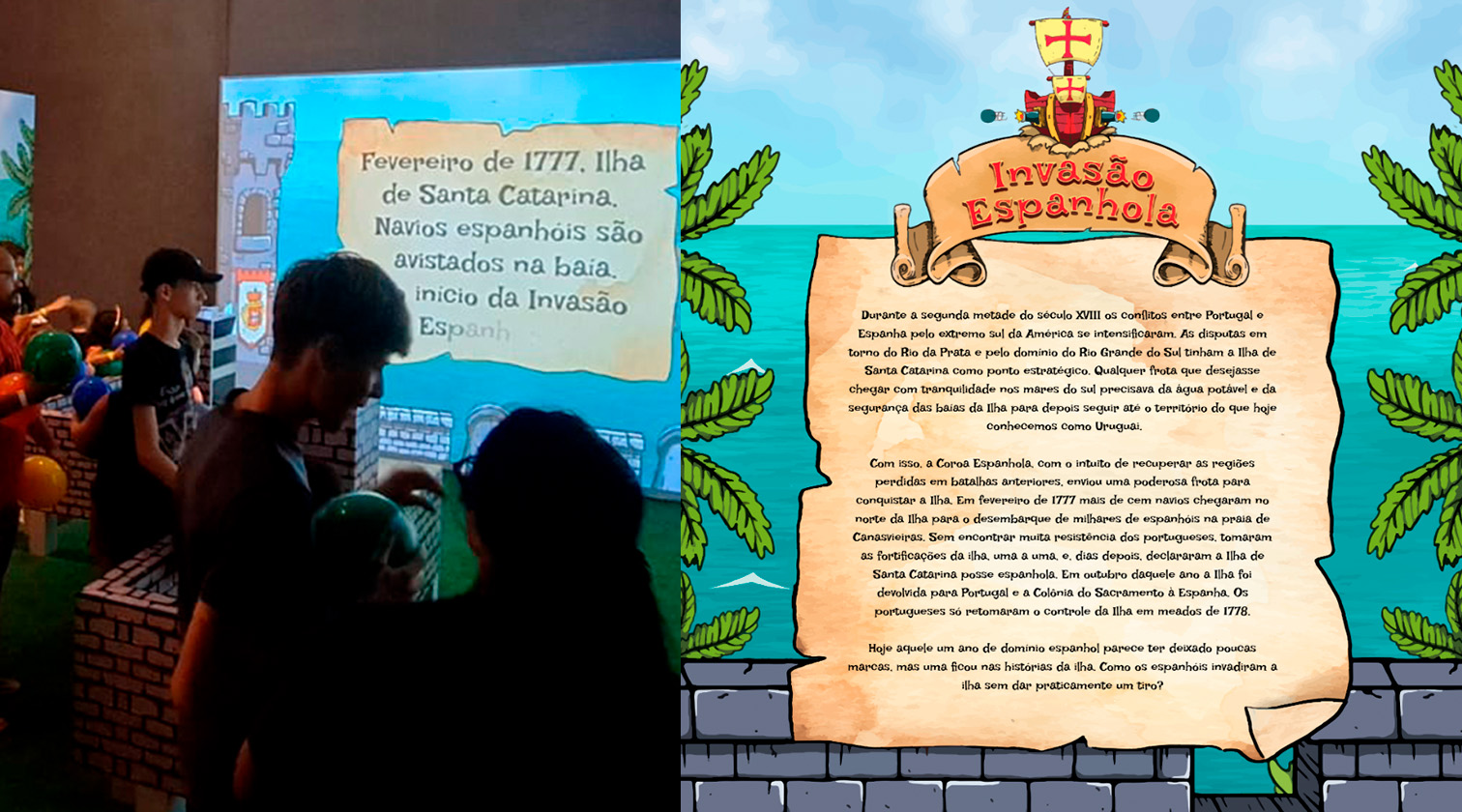
The fact cannot be changed and the island of Santa Catarina was taken, which did not stop the different school groups received by the museum from doing their best to sink the enemy ships! The technological experience marked the anniversary of Florianópolis, making history more fun for the different groups that visited the exhibition at the Museum of Florianópolis. In addition to the game's storytelling, the story was also told in detail in the arts printed on the museum's walls, which also became drawings for the kids to paint while resting from the attack.
